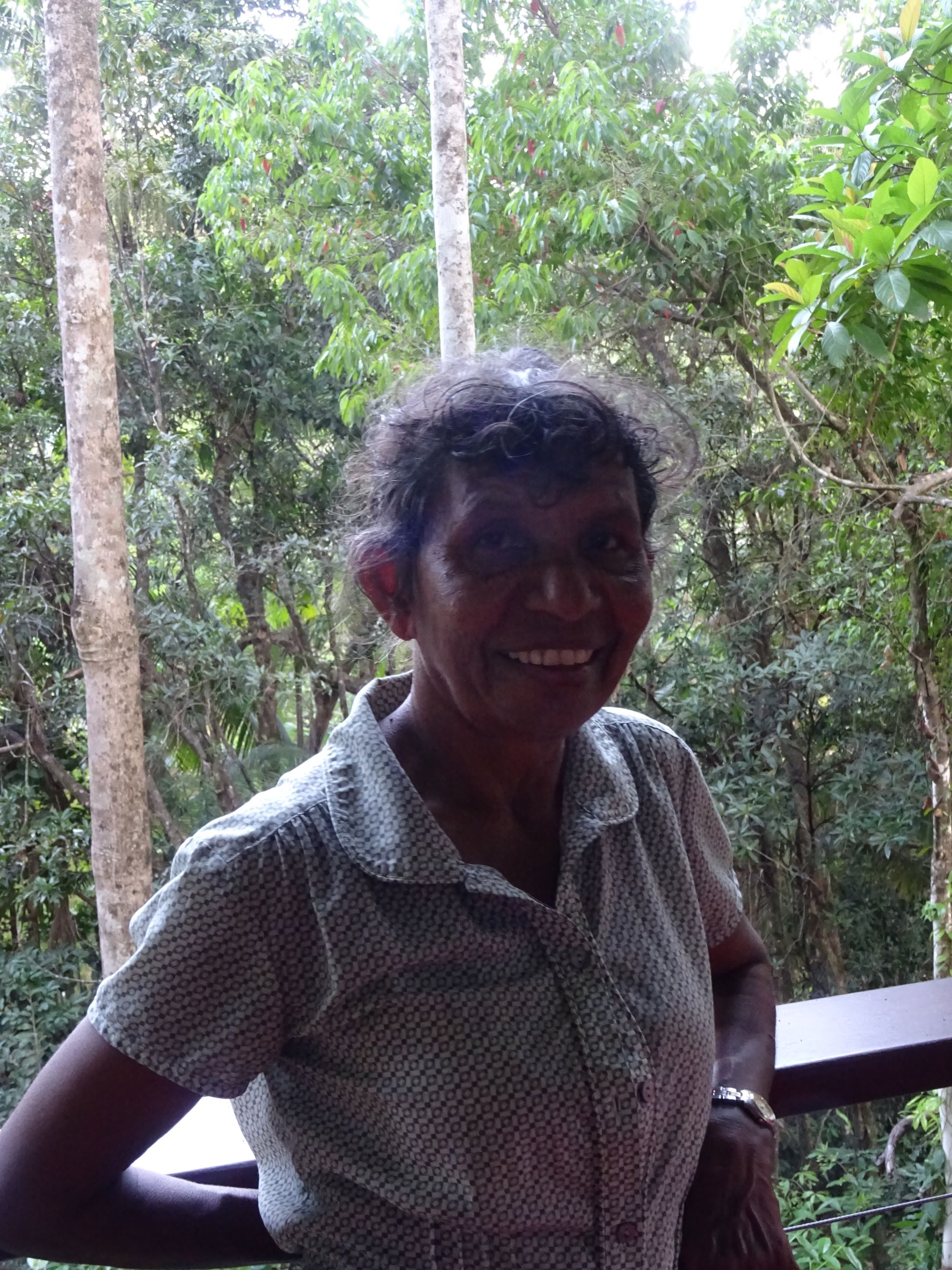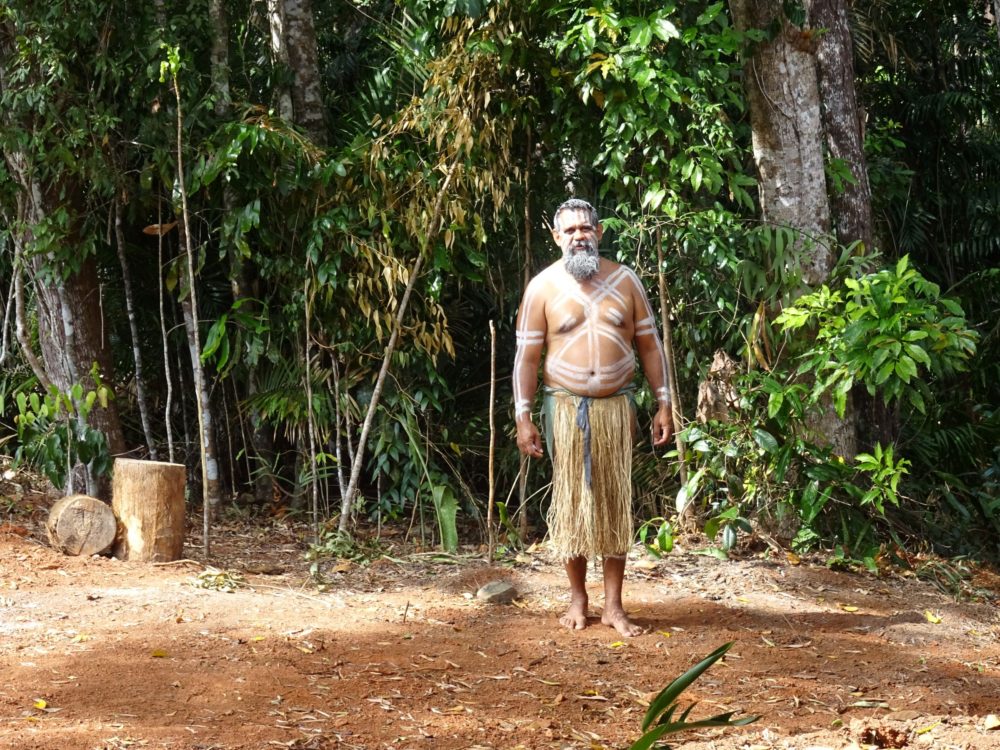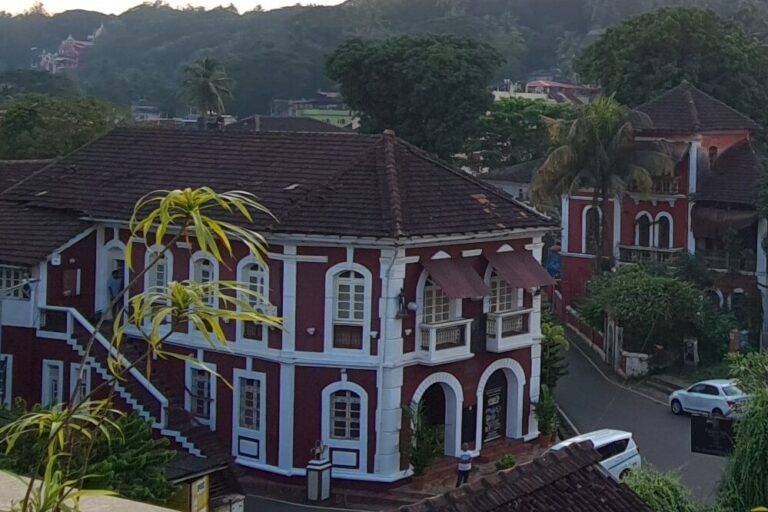By Neena Bhandari
Cairns [Queensland], December 17, 2014 (IPS) – As a child growing up in Far North Queensland, William Clark Enoch would know the crabs were on the bite when certain trees blossomed, but today at 51 years he is noticing visible changes in his environment such as extreme climatic conditions, frequent storms, soil erosion, salinity in fresh water and ocean acidification.
“The land cannot support us anymore. The flowering cycles are less predictable. We have to now go much further into the sea to catch fish”, said Enoch, whose father was from North Stradbroke Island, home to the Noonuccal, Nughie and Goenpul Aboriginal people.
Aboriginal and Torres Strait Islander people, who comprise only 2.5 per cent (548,400) of Australia’s nearly 24 million population, are part of the oldest continuing culture in the world. They have lived in harmony with the land for generations. “But now pesticides from sugarcane and banana farms are getting washed into the rivers and sea and ending up in the food chain. We need to check the wild pig and turtles we kill for contaminants before eating”, Enoch told IPS.
With soaring temperatures and rising sea levels, indigenous people face the risk of being further disadvantaged and potentially dislocated from their traditional lands.
“We have already seen environmental refugees in this country during the Second World War. In the 1940s, Torres Strait Islander people were removed from the low lying Saibai Island near New Guinea to the Australian mainland as king tides flooded the island”, said Mr Mick Gooda, Aboriginal and Torres Strait Islander Social Justice Commissioner at the Australian Human Rights Commission.
Global sea levels have increased by 1.7 millimeters per year over the 20th century. Since the early 1990s, northern Australia has experienced increases of around 7.1 millimetres per year, while eastern Australia has experienced increases of around 2.0 to 3.3 millimetres per year.
For indigenous people, their heart and soul belongs to the land of their ancestors. “Any dislocation has dramatic effects on our social and emotional wellbeing. May be these are some of the reasons why we are seeing great increases in self-harm”, Mr Gooda, who is a descendent of the Gangulu people from the Dawson Valley in central Queensland, told IPS.
Displacement from the land also significantly impacts on culture, health, and access to food and water resources. Water has been very important for Aboriginal people for 60,000 years, but Australia is becoming hotter and drier.
2013 was Australia’s warmest year on record, according to the Bureau of Meteorology’s Annual Climate Report. The Australian area-averaged mean temperature was +1.20 degree Centigrade above the 1961–1990 average. Maximum temperatures were +1.45 degree Centigrade above average, and minimum temperatures +0.94 degree Centigrade above average.
“On the other side during the wet season, it is getting wetter. One small town, Mission Beach, in Queensland recently received 300mm of rain in one night. These extreme climatic changes in the wet tropics are definitely impacting on Indigenous lifestyle”, remarked Mr Gooda.
Researchers warn that climate change will have a range of negative impacts on liveability of communities, cultural practices, health and wellbeing.
Dr Rosemary Hill, a research scientist at the Commonwealth Scientific and Industrial Research Organisation (Ecosystem Sciences) in Cairns said, “The existing poor state of infrastructure in indigenous communities such as housing, water, energy, sewerage, and roads is likely to further deteriorate. Chronic health disabilities, including asthma, cardiovascular illness and infections, and water, air and food-borne diseases are likely to be exacerbated”.
Environmental and Indigenous groups are urging the government to create new partnerships with indigenous Australians in climate adaptation and mitigation policies and also to tap into indigenous knowledge of natural resource management.
“There is so much we can learn from our ancestors about tackling climate change and protecting country. We have to transition Australia to clean energy and leave fossil fuels in the ground. Our communities don’t have to rely on hand outs from mining companies, we can power our homes with the sun and the wind, and build economies based on caring for communities, land and culture that is central to our identity”, says the Australian Youth Climate Coalition (AYCC) Communications Director, Kelly Mackenzie.
AYCC is calling on the Australian Government to move beyond fossil fuels to clean and renewable energy. Indigenous elder in Residence at Griffith University’s Nathan and Logan campuses in Brisbane, Togiab McRose Elu said, “Global warming isn’t just a theory in Torres Strait, it’s lapping at people’s doorsteps. The world desperately needs a binding international agreement including an end to fossil fuel subsidies”.
According to a new analysis by Climate Action Tracker (CAT), Australia’s emissions are set to increase to more than 50 per cent above 1990 levels by 2020 under the current Liberal-National Coalition Government’s climate policies. The Copenhagen pledge (cutting emissions by five per cent below 2000 levels by 2020), even if fully achieved, would allow emissions to be 26 per cent above 1990 levels of energy and industry global greenhouse gases (GHGs).
It is to be noted that coal is Australia’s second largest export catering to around 30 per cent of the world’s coal trade. Prime Minister Tony Abbott has declared that coal is good for humanity. His Government has dumped the carbon tax and it is scaling back the renewable energy target.
The United Nation’s Intergovernmental Panel on Climate Change (IPCC) in its fifth and final report has said that use of renewable energy needs to increase from 30 per cent to 80 per cent of the world’s energy supply.
Dr Hill sees new economic opportunities for indigenous communities in energy production, carbon sequestration, GHG abatement and aquaculture “Climate adaptation provides opportunities to strengthen indigenous ecological knowledge and cultural practices which provide a wealth of experience, understanding and resilience in the face of environmental change”, she told IPS.
With the predicted change in sea level, traditional hunting and fishing will be lost across significant areas. A number of indigenous communities live in low-lying areas near wetlands, estuaries and river systems. “These areas are important culturally and provide a valuable subsistence source of food, particularly protein, unmet by the mainstream market”, informs Andrew Picone, Australian Conservation Foundation’s Northern Australia Programme Officer.
Picone suggests combined application of cultural knowledge and scientific skill as the best opportunity to address the declining health of northern Australia’s ecosystems.
Recently, traditional owners on the Queensland coast and WWF-Australia signed a partnership to help tackle illegal poaching, conduct species research and conserve threatened turtles, dugongs and inshore dolphins along the Great Barrier Reef.
The Girringun Aboriginal Corporation and Gudjuda Aboriginal Reference Group together represent custodians of about a third of the Great Barrier Reef.

Elaine Price, 58-year-old Olkola woman, who hails from Cape York, would like more work opportunities in sustainable industries and ecotourism for her people closer home. “Our younger generation is losing the knowledge of indigenous plants and birds. This knowledge is vital to preserving and protecting our ecosystem”.
© Copyright Neena Bhandari. All rights reserved. Republication, copying or using information from neenabhandari.com content is expressly prohibited without the permission of the writer and the media outlet syndicating or publishing the article.




